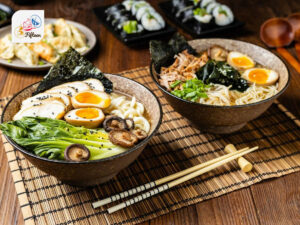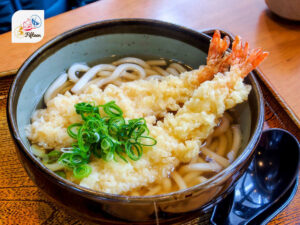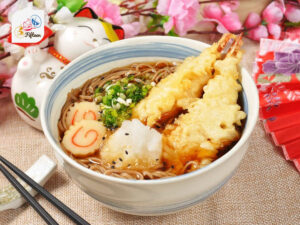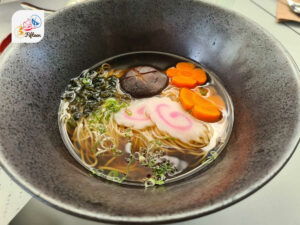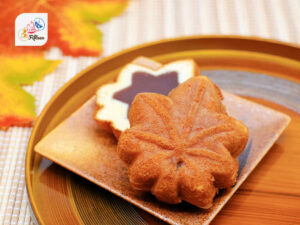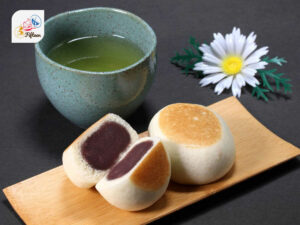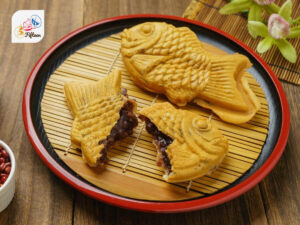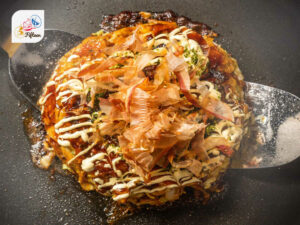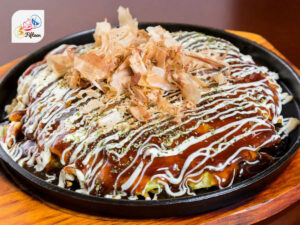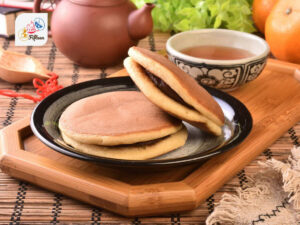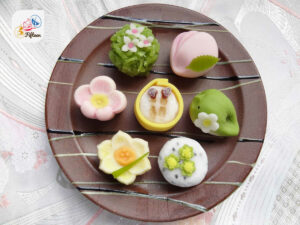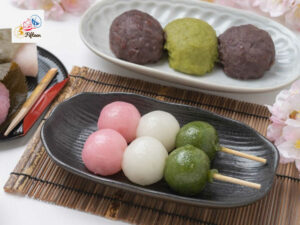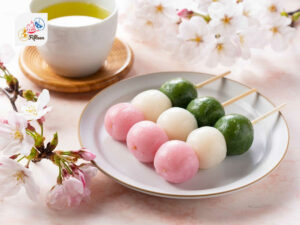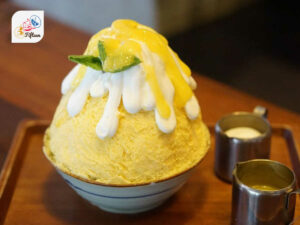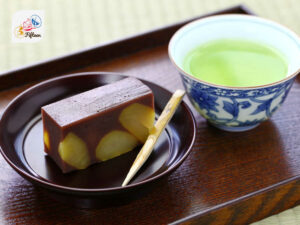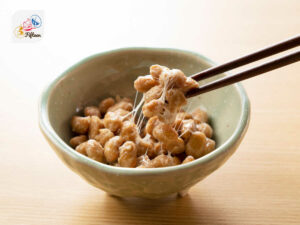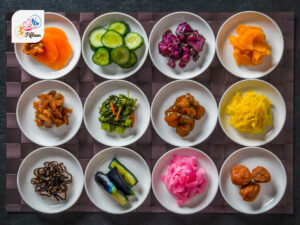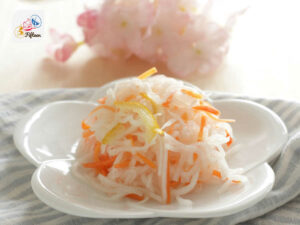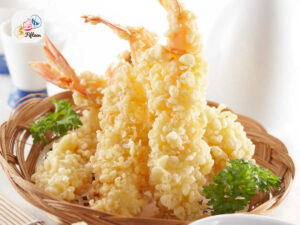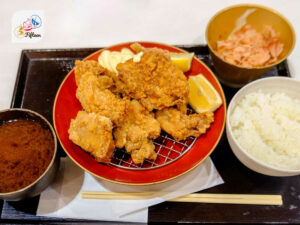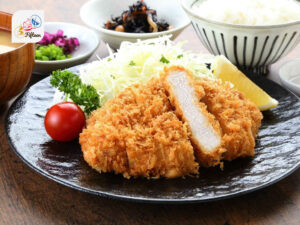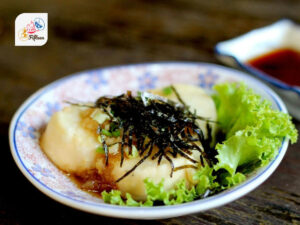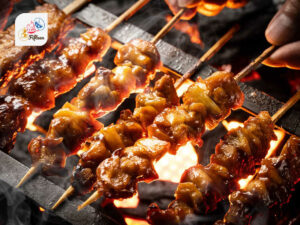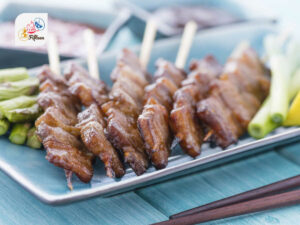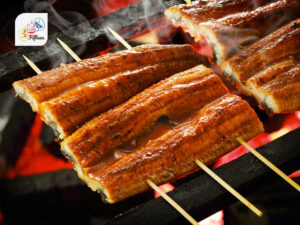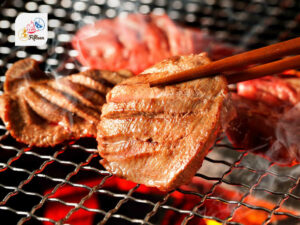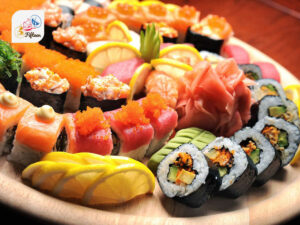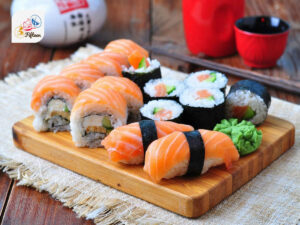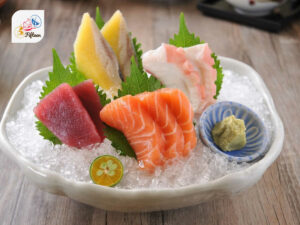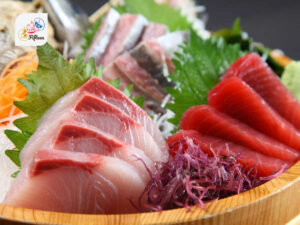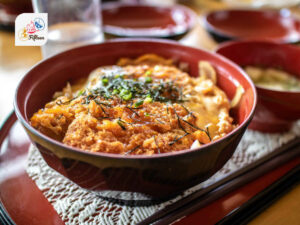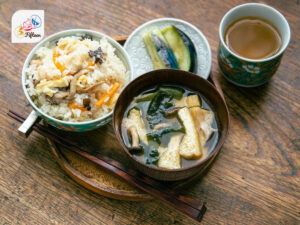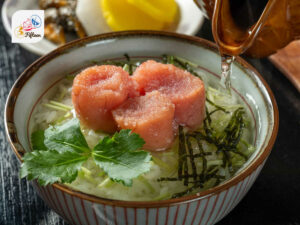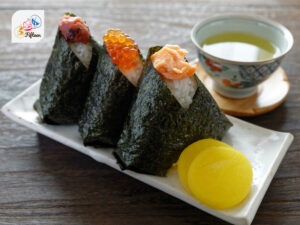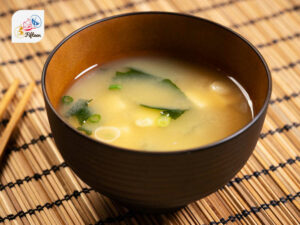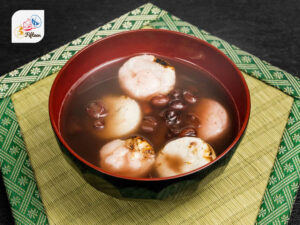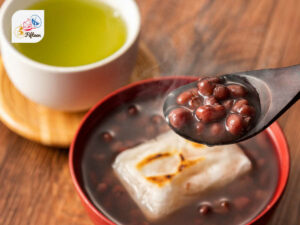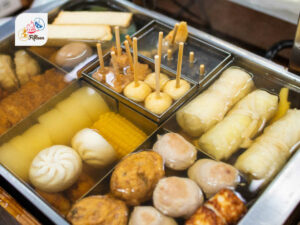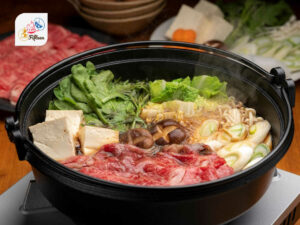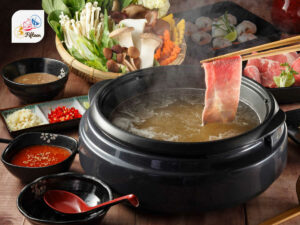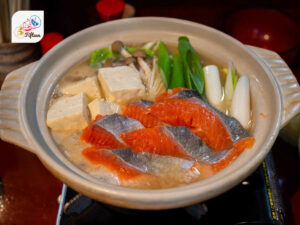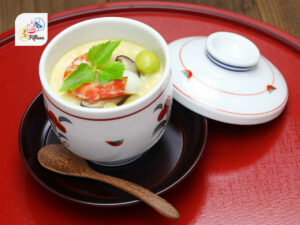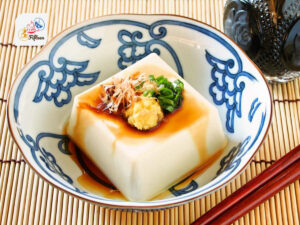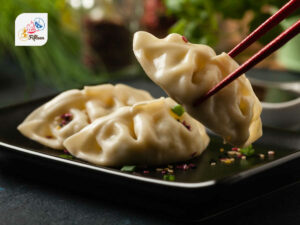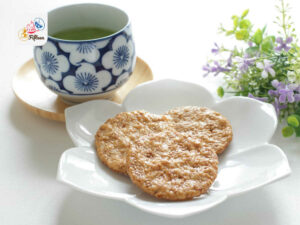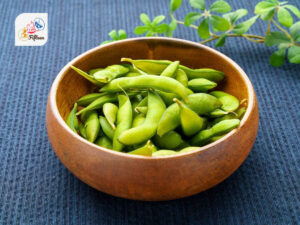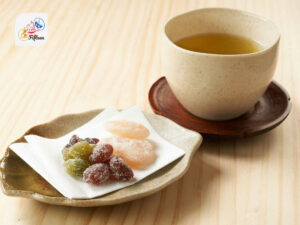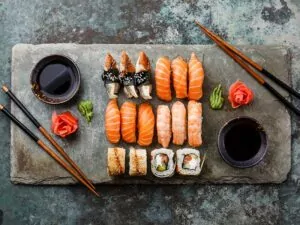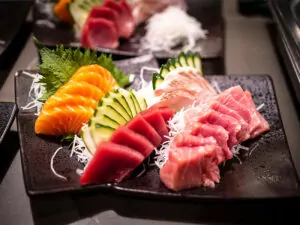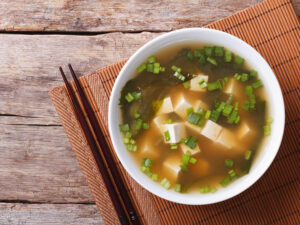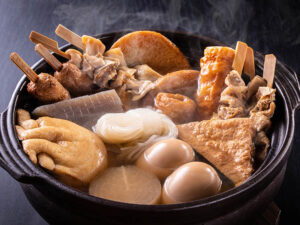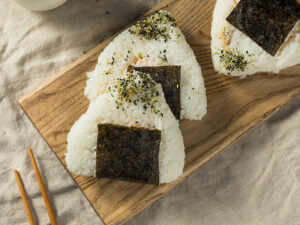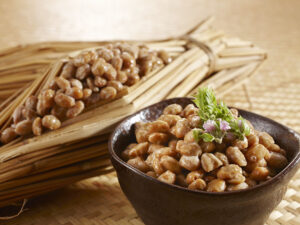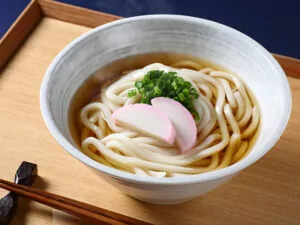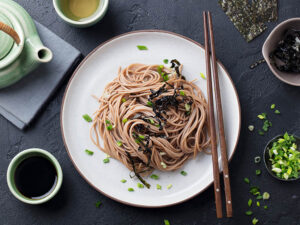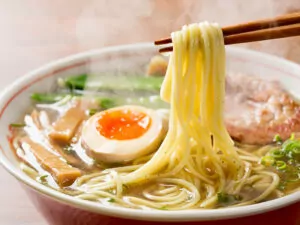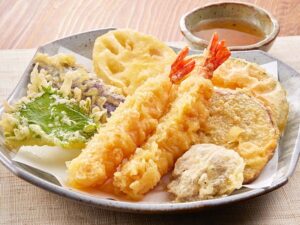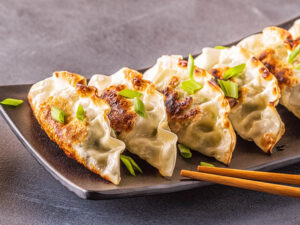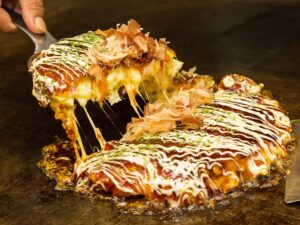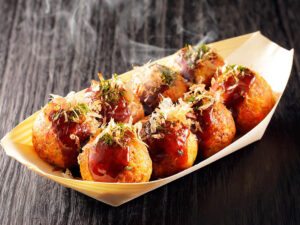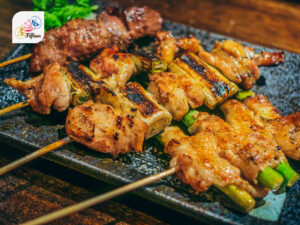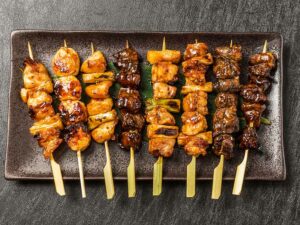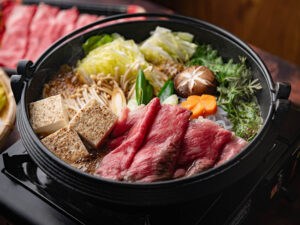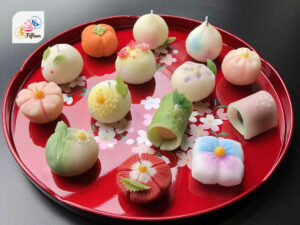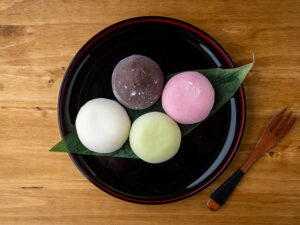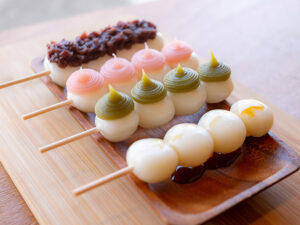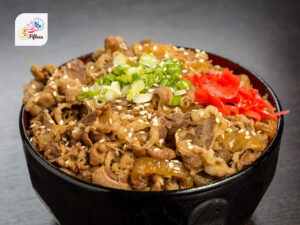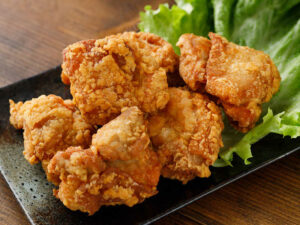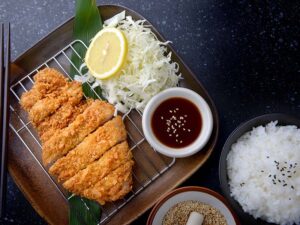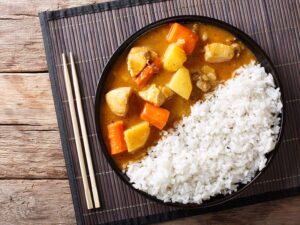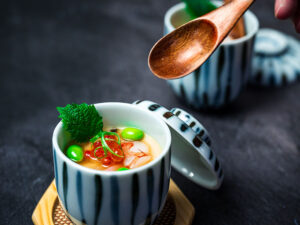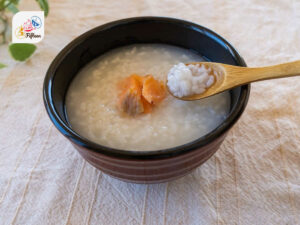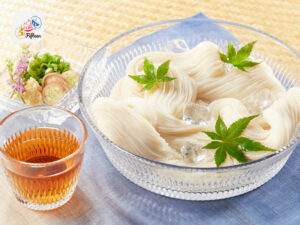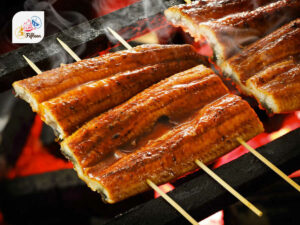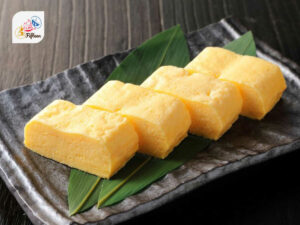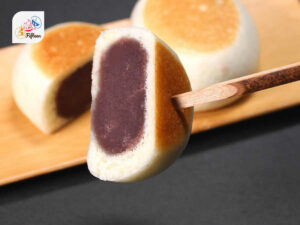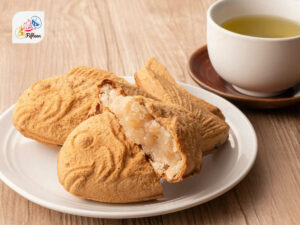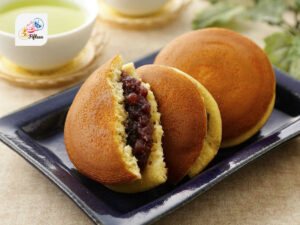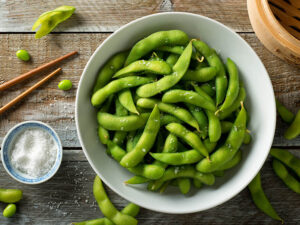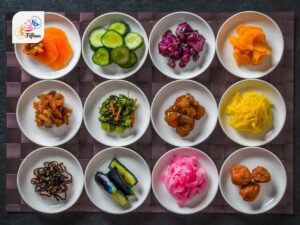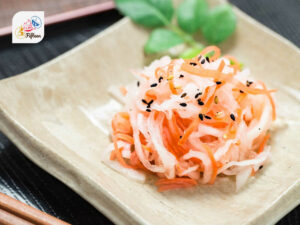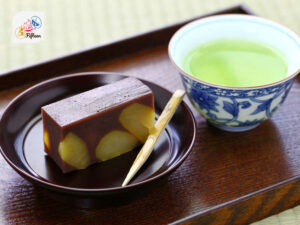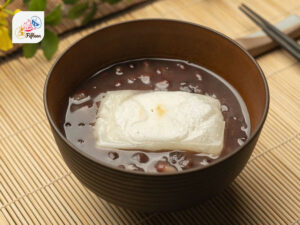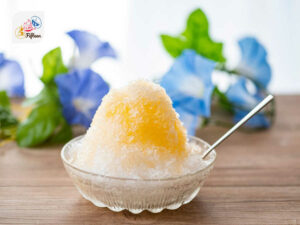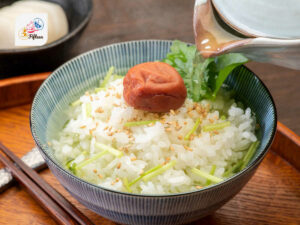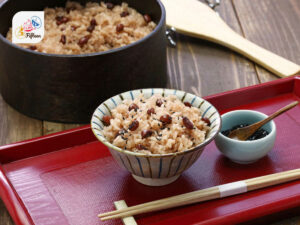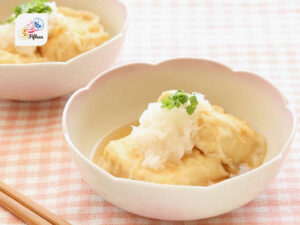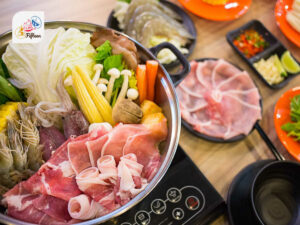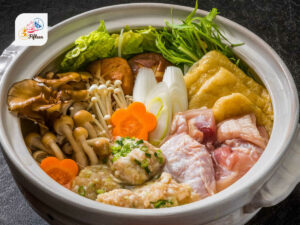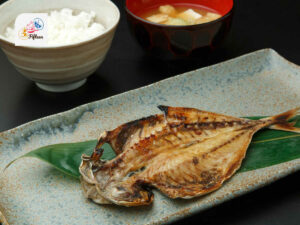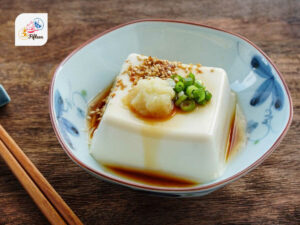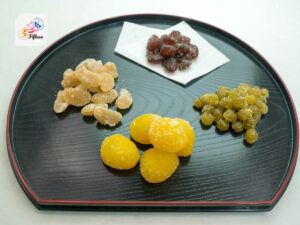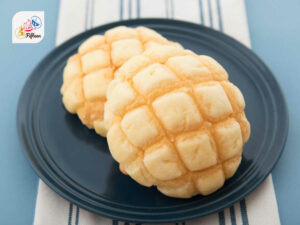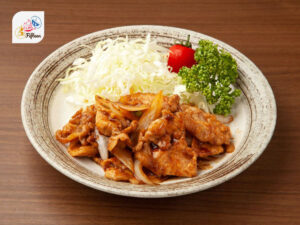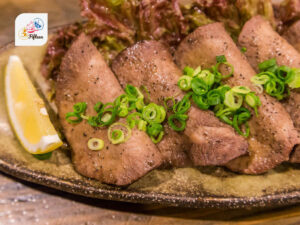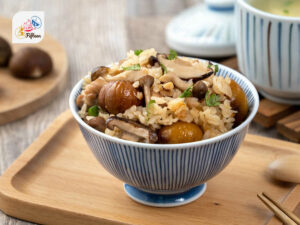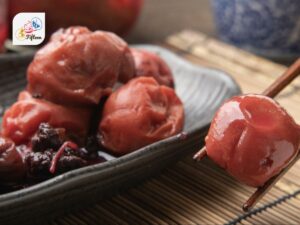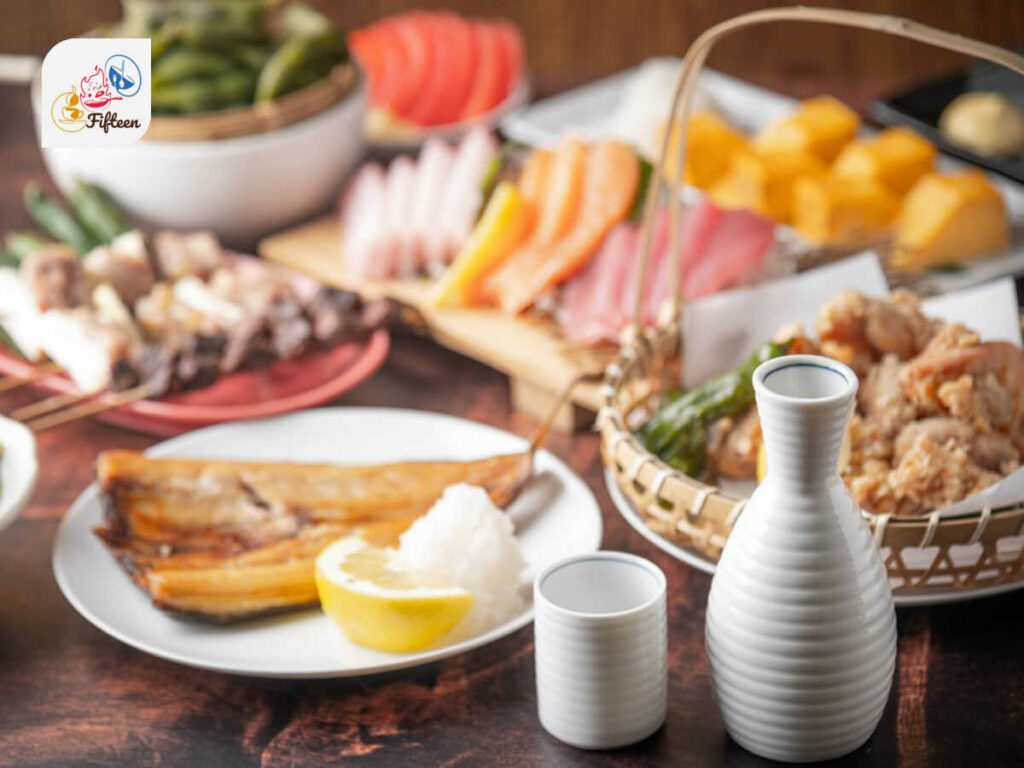Japanese Food: Basic Overview
Common Ingredients
Common Cooking Methods
Courses
Meals
Key Taste
Eating Etiquette
Meal Presentation
Culinary Festivals
Influence and Fusion
Popular Types of Japanese Food
-
Noodle Soups
Japanese noodle soups are renowned for their rich and diverse flavors.
Key ingredients include various types of noodles like udon, soba, and ramen, accompanied by a wide array of toppings such as meats, vegetables, and eggs.
These soups are known for their balance of flavors and are a staple in Japanese cuisine.
-
Cakes and Pastries
Japanese cakes and pastries are typically lighter and less sweet compared to their Western counterparts.
They often incorporate ingredients like sweet red bean paste, matcha (green tea powder), and rice flour.
Traditional pastries like dorayaki and taiyaki are popular treats, often enjoyed during tea time or as desserts.
-
Pancakes
Japanese pancakes showcase a diverse range, from the savory to the sweet option.
These pancakes represent the versatility of Japanese cuisine, offering a contrast between savory and sweet flavors.
-
Desserts
Japanese desserts are diverse, ranging from traditional sweets like mochi and wagashi to more modern creations.
These desserts are often subtly sweet and aesthetically pleasing, frequently using ingredients like azuki beans, rice flour, and matcha.
Seasonal fruits also play a significant role in Japanese desserts.
-
Fermented Dishes
Fermentation is an essential part of Japanese cuisine, with dishes like natto (fermented soybeans) and various pickles (tsukemono) being popular.
These dishes are valued for their umami flavor, often served as side dishes or as part of a traditional Japanese meal.
-
Fried Dishes
Japanese fried dishes are known for their light, crispy batter and the skillful technique with which they are prepared.
These dishes often feature seafood or vegetables in tempura, and marinated chicken in karaage, showcasing a perfect balance of crunch and flavor.
-
Grilled and Barbecued Dishes
Grilled dishes are popular in Japanese cuisine. These dishes are often seasoned with a blend of soy sauce, mirin, and sugar.
They provide a distinctive sweet and savory flavor, and are typically enjoyed with a bowl of rice or as part of a larger meal.
-
Raw dishes
Raw dishes such as sushi and sashimi are iconic in Japanese cuisine.
These dishes celebrate the freshness and quality of ingredients, particularly seafood.
Expertly sliced and presented, they are often enjoyed with soy sauce, wasabi, and pickled ginger.
-
Rice Dishes
Rice is a staple in Japanese cuisine, with dishes like donburi (rice bowl) and sushi being central to everyday eating.
These dishes can range from simple steamed rice to more complex preparations featuring a variety of toppings and flavors.
They are often accompanied by pickles or soup.
-
Soups
Japanese soups are integral to a traditional meal.
These soups vary from light and brothy to more substantial and hearty, often containing ingredients like tofu, seaweed, and vegetables.
-
Boiled Dishes
Boiled dishes such as oden (a winter stew) and sukiyaki are comforting and rich in flavor.
These dishes often include a variety of ingredients like fish cakes, tofu, and vegetables.
These dishes are usually simmered in a tasty broth, perfect for sharing and enjoyed during colder months.
-
Steamed Dishes
Steaming is a popular cooking method in Japanese cuisine, resulting in dishes that are healthy and flavorful.
Steamed dishes like chawanmushi and various dumplings are delicate and often served as appetizers or part of a multi-course meal.
-
Snacks
Japanese snacks range from savory to sweet, often reflecting local ingredients and flavors.
These snacks are widely enjoyed for their convenience and diverse flavors.
Japanese dishes are common dishes that are widely savored in Japan, an island country in East Asia.
Most of these dishes developed through years of political, economic, and social changes. Some have been around for centuries, while others appeared later, from the 1800-1900s.
However, these late-born dishes, such as karaage, have been widely recognized and enjoyed throughout Japan. Given their widespread popularity, many have agreed these late-comers are part of Japanese cuisine.
Still, no matter coming sooner or later, these dishes have helped create “washoku”, the traditional Japanese cooking. Washoku often comes with a base of cooked rice, miso soup, and other dishes made with seasonal ingredients.
Within each dish in this comprehensive list, you’ll discover its main ingredients, cooking methods, and varieties.
Besides, I’ve also answered many questions, like how traditional cuisine of this East Asian country became famous and which dishes the locals eat on New Year.
Afterward is a list of famous drinks to pair with these Japanese dishes. Next, I’ll walk you through the global influence of Japanese cuisine, especially in China and Korea. When finished, you’ll get to know which food is avoided in this island nation.
52 Most Popular Japanese Dishes with Filters
Discover the top 52 Japanese dishes listed by popularity below. Feel free to use advanced filters like alphabetical sorting, main ingredients, taste, cooking methods, dish types, courses, and global prevalence for easy navigation.
Moreover, for a more customized search, you have the option to filter the list based on specific culinary styles such as the most popular, national, traditional, street food, exotic and fusion options.
Sushi
- National
- Traditional
Sushi is an iconic Japanese dish created during the Yayoi period (early Neolithic–early Iron Age). Sushi’s main ingredients are vinegared rice and raw seafood as toppings.
Japanese people often use medium-grain white rice and season it with vinegar, sugar, and salt to make vinegared rice. As for the toppings, sushi usually uses raw fish, such as salmon, tuna, or yellowtail. But other seafood like shrimp, squid, or eel also works.
Sushi is often served with gari (pickled ginger), soy sauce, and wasabi. Besides, the locals also add daikon radish or pickled daikon (takuan) as garnishes.
Today, sushi is well-loved across the world, with countless variants. Among them, makizushi (rolled sushi) and nigirizushi (hand-pressed sushi) are the 2 most popular.
Sashimi
- Exotic
- National
- Traditional
Sashimi is another time-honored and exotic Japanese food consisting of sliced raw fish or meat. Common fish choices for sashimi are mackerel, salmon, tuna, and yellowtail.
Many Japanese restaurants even use other types of seafood, such as octopus, sea urchin, shrimp, and squid. And although uncommon, you’ll also find sashimi using red meat like beef and horse or vegetarian foods like tofu skin.
Still, sashimi tastes best when served with soy sauce and wasabi. Gari, grated garlic, or ponzu sauce (citrus sauce) are also nice accompaniments. As for garnishes, nothing beats shredded daikon radish and shiso leaves.
Miso Soup
- National
- Traditional
Miso soup is a long-established Japanese soup with dashi stock and miso paste as the base. As a basic food in Japan, miso soup usually appears in every meal, alongside rice.
Then, depending on the region, season, and personal liking, miso soup can have additional ingredients like seaweed and tofu or aburaage (Japanese deep-fried tofu).
Miso soup’s name also changes based on the ingredients. For example, miso soup is called tonjiru or butajiru if it has pork.
Oden
- Street Food
- Traditional
Oden is a well-known Japanese one-pot dish that the local people have enjoyed since old times.
Oden includes various ingredients, like boiled eggs, daikon radish, konjac, and different fish cakes. All components are simmered in a light soy sauce-based dashi broth until served.
Oden appears as winter food in Japanese convenience stores, food carts, and izakayas (informal Japanese bars). The ingredients vary according to region. When homemade, each family has a different recipe to make oden.
Onigiri
- Street Food
- Traditional
Onigiri is a popular staple in Japan and other countries under different names: omusubi or nigirimeshi. Mainly made with white rice, onigiri usually has a cylindrical or triangular shape and a wrapping of nori (dried seaweed).
Common omusubi fillings are katsuobushi (bonito flakes), kombu, mentaiko (spicy cod roe), salted salmon, takanazuke (pickled mustard greens), tarako (pollock roe), and umeboshi (salted plums).
Originally a preservation method for leftover rice, onigiri is now a must-have product in many Japanese convenience stores and supermarkets.
Natto
- Exotic
- Traditional
Natto is a traditional Japanese breakfast food made with fermented whole soybeans. Besides rice, natto also goes with Japanese bunching onion, karashi (mustard dressing), and soy or tare sauce.
Since natto requires fermenting, it develops an acquired taste and smell. Combined with the sticky, slimy texture, natto is unfriendly to people not used to Japanese cuisine.
Udon
- Street Food
- Traditional
Udon is a traditional Japanese thick, white noodle made from wheat flour. There are various ways to prepare udon, depending on the region. For example, Eastern Japan uses dark soy sauce-based broth, while the Western region utilizes light soy sauce.
Regarding toppings, udon usually has aburaage, kakiage (vegetable fritters), kamaboko (fish cake), and shrimp tempura. Among all udon varieties, kake udon is the simplest, using only udon noodles soaked in a light broth and topped with chopped scallions.
Soba
- Street Food
- Traditional
Soba is thin Japanese noodles made from buckwheat flour, considered both a cheap street food and a fine-dining delicacy. The topping for soba noodles is similar to udon, but this buckwheat noodle has 2 main serving ways: cold or hot.
In the cold way, cooked soba noodles are drained and chilled before being served with a dipping sauce. This serving method is suitable for summer, while the hot serving method usually appears in winter, as the soba noodles are eaten with a hot soy-based dashi broth.
The Japanese have a tradition of eating soba on New Year’s Eve to say goodbye to the old year and welcome a new year.
Ramen
- National
- Street Food
- Traditional
Ramen is a Japanese noodle dish originating in Chinatown in Yokohama in the early 20th century. Today, ramen has become a cultural representative of Japan.
Ramen uses Chinese wheat noodles and serves these wheat noodles in a miso- or soy sauce-based broth. Regular ramen toppings are chāshū (braised pork belly), menma (seasoned bamboo shoots), nori, and scallions.
Still, what’s special about ramen is that each Japanese region has its own variety. The most popular names are tonkotsu ramen (rich ramen with pork bone broth) from Fukuoka, miso ramen from Sapporo, and ramen with soy-flavored chicken broth in Tokyo.
Please note that although ramen appears everywhere in Japan, the highest-quality ramen bowl is usually in ramen-ya (ramen-specialized restaurants).
Tempura
- National
- Street Food
- Traditional
Tempura is a classic Japanese food that first appeared in the 1600s through the Portuguese in Nagasaki.
Tempura consists of seafood, vegetables, and meat battered and deep-fried. When fried, the batter usually includes eggs, iced water, and soft wheat flour for a fluffy and crisp exterior.
Tempura must be eaten immediately after frying for the best experience, served with dipping sauce, commonly tentsuyu sauce (tempura dipping sauce).
Sprinkling some sea salt on tempura also elevates its flavor. Grated daikon is usually tempura’s companion, besides rice and noodle dishes.
Kakiage is the cheapest and most common among many tempura variants. Kakiage contains various sliced vegetables, like burdock, carrot, and onions, sometimes mixed with shrimp or squid.
Gyōza
- Street Food
- Traditional
Gyōza (Gyoza) is a Japanese equivalent of jiaozi (Chinese dumplings), brought by soldiers stationed in China during World War II. Still, gyoza has a stronger garlic flavor and thinner wrappers than Chinese versions.
Gyoza’s filling usually combines minced pork with Asian chives, cabbage, garlic, ginger, and sesame oil. Some restaurants can use beef or chicken for the gyoza filling instead of pork.
Yaki gyozas (pan-fried gyozas) are the most popular variant, including pan-frying your gyozas on one side first and steaming them in water later. Other common methods for cooking gyozas are boiling and deep-frying.
Gyozas are a regular side dish in many Chinese or ramen restaurants in Japan. Gyozas are often eaten with a soy-based tare sauce flavored with chili oil and vinegar. Local markets sell these dumplings in ready-to-eat or frozen forms for those wanting to eat gyozas at home.
Okonomiyaki
- Street Food
- Traditional
Okonomiyaki is a long-established Japanese savory pancake with a wheat flour batter mixed with cabbage, meat, seafood, and other ingredients. Okonomiyaki is then cooked on a teppan (a flat griddle), hence its name.
Aside from the filling batter, okonomiyaki also has lots of toppings: aonori (dried green seaweed), beni shoga (Japanese red pickled ginger), katsuobushi, mayonnaise, and okonomiyaki sauce.
Hiroshima and Kansai create the 2 most popular okonomiyaki variants, with batters and toppings varying depending on the area. Meanwhile, Tokyo also has its own version: monjayaki, a runnier okonomiyaki with dashi broth or water added to the batter.
Takoyaki
- Street Food
- Traditional
Takoyaki is a classic Japanese snack with a ball shape. This ball-shaped snack is made with a wheat flour batter filled with diced octopus, beni shoga, green onion, and tenkasu (tempura crumbs). That’s why takoyaki is called “octopus balls”.
After being cooked in the takoyaki pan (a special griddle), these octopus balls are topped with aonori, katsuobushi, mayonnaise, and takoyaki sauce. Takoyaki is considered a midday snack, but some places in Japan also serve takoyaki with rice as a complete meal.
Kushiyaki
- Street Food
- Traditional
Kushiyaki refers to traditional Japanese grilled meat skewers, whether poultry, non-poultry, or vegetables. The ingredients are cut into bite-sized pieces, skewered into bamboo or cypress skewers, and grilled.
Kushiyaki has 2 main types: salty and salty-sweet. Salty kushiyaki is flavored with only salt, while the salty-sweet one uses tare sauce for a sweet taste.
In Japan, kushiyaki and yakitori can replace each other when discussing skewered meat in general. However, regarding specific items, yakitori is only used for grilled chicken skewers.
Yakitori
- Street Food
- Traditional
Yakitori is a traditional Japanese dish where chicken is cut into small pieces, skewered, and grilled over a charcoal fire. The skewers, made of materials like steel or bamboo, allow for even cooking.
Seasoning options include a simple salt or a salty-sweet tare sauce, made from mirin, sake, soy sauce, and sugar. While primarily chicken, the term yakitori can also refer to other skewered and grilled foods.
Popular in various settings, from street food stalls to specialized yakitori-ya restaurants, this dish is known for its convenience, portability, and distinctive charcoal-grilled flavor.
Sukiyaki
- Traditional
Sukiyaki is a traditional Japanese hot pot that usually uses thinly sliced beef. The beef is simmered with mirin (sweet rice wine), soy sauce, sugar, and different vegetables. The used pot is often a shallow iron pot.
Sukiyaki’s unique aspect is that you dip the cooked ingredients in beaten raw eggs before eating. As a hot pot, sukiyaki is a common food during winter in this island nation, especially at bōnenkai (Japanese year-end drinking parties).
Wagashi
- National
- Traditional
Wagashi are traditional Japanese sweets typically served with green tea. Made mainly from plant ingredients like mochi (rice cake) and anko (red bean paste), these confections are celebrated for their artistic and seasonal designs.
They come in various shapes and consistencies, often named after elements of nature, poetry, or historical events. Integral to Japanese culture, wagashi are not just treats but also popular as ceremonial gifts and symbols of the changing seasons.
Mochi
- Traditional
Mochi is a traditional Japanese rice cake made from mochigome (Japanese glutinous rice) and optional ingredients like cornstarch, sugar, and water. After steaming, mochi will go through a process of pounding and molding.
Mochi is now an everyday snack in this East Asian country, but it’s still mostly associated with the New Year, with zōni (zoni or ozoni) being the most prominent. Zoni is a savory mochi soup with carrot, honeyword, kamaboko, and taro.
Several people often mistake warabimochi as a type of mochi, but it isn’t. Warabimochi is a confection made with warabiko (bracken starch) instead of glutinous rice. Coated with kinako (roasted soybean flour), warabimochi is a favorite summer dessert in Japan.
Dango
- Street Food
- Traditional
Dango is a traditional sweet Japanese dumpling combining regular, uruchi, and glutinous rice flour. The local sellers will skewer 3 to 5 dango pieces on a skewer, served with green tea.
While dango is available all year round, different occasions require other dango varieties. For example, the sakura-viewing season won’t be complete without hanami dango, a dango variant with 3 colors: green, pink, and white.
Then, in the Mid-Autumn Festival, you’ll meet tsukimi dango, a white dango representing the moon. Besides seasonal types, dango also has other common variations, such as mitarashi, a dango covered in a thick syrup made of soy sauce and sugar.
Donburi
- Street Food
- Traditional
Donburi is a Japanese rice-bowl dish traditionally containing meat, fish, or other ingredients served over rice. Donburi’s trademark is the overside rice bowl.
This rice-bowl dish has countless versions made from different ingredients, but gyudon and oyakodon are the 2 most famous names.
Gyudon is a Japanese beef rice bowl with beef and onions simmered in a slightly sweet sauce. This beef rice bowl is occasionally topped with grated cheese, kimchi, Welsh onions, onsen tamago (hot spring egg), or a raw egg.
Meanwhile, oyakodon serves simmered chicken and eggs over rice. Oyakodon means “parents and child” in Japan, referring to the fact that it has both chicken and eggs.
Karaage
- Street Food
- Traditional
Karaage is a popular Japanese deep-fried meat, typically chicken or fish. The coating for karaage is often flour and potato starch or cornstarch. Karaage often comes alone as an appetizer or snack or with shredded cabbage or rice.
Many people often mistake karaage for tempura since they are both deep-fried foods. However, karaage requires marinating ingredients before coating and frying, while temperature doesn’t.
The first record of karaage was in the Genroku period (1688-1704). Later in the 1930s, Chinese restaurants helped popularize karaage as Chinese-style food.
Tonkatsu
- Street Food
- Traditional
Tonkatsu is a Japanese dish featuring a breaded and deep-fried pork cutlet. The pork, either a fillet or loin, is coated in panko (Japanese breadcrumbs) and fried until golden and crispy.
It’s commonly served sliced, accompanied by shredded cabbage, and enjoyed with a thick, Worcestershire-style tonkatsu sauce, mustard, and sometimes a slice of lemon.
Tonkatsu is often served with rice, miso soup, and pickles and can be used in other dishes like katsudon (pork cutlet with egg over rice) and katsu curry (curry with pork cutlet).
Japanese Curry
- Fusion
- National
- Traditional
Japanese curry is a widely popular dish in Japan that typically consists of a thick, stew-like curry sauce containing meat (commonly beef, pork, or chicken) and vegetables like onions, carrots, and potatoes.
It’s commonly served over rice (curry rice), with udon noodles (curry udon), or as a filling in bread (curry bread). Japanese curry has a unique flavor profile, adapted to suit Japanese tastes, and is less spicy compared to Indian curries.
It’s a staple in Japanese cuisine, often found in homes and restaurants, and is considered a national dish.
Chawanmushi
- Traditional
Chawanmushi is a traditional Japanese egg custard served in a tea-cup-like container. Like Chinese steamed eggs, this egg custard is seasoned with dashi broth, mirin, and soy sauce.
However, Chawanmushi contains different savory toppings: ginkgo, lily root, kamaboko, shiitake mushrooms, and boiled shrimp. This egg custard is part of the meal, whether served hot or cool.
Kayu
- Traditional
Kayu, or okayu, is a Japanese rice porridge with a 5:1 or 7:1 ratio of water to rice. The locals also use chicken stock, miso, or salt to enhance this rice porridge’s flavor.
Kayu sometimes has eggs to thicken it. Meanwhile, ginger, Welsh onion, roe, salmon, or umeboshi are common toppings for this rice porridge. As food for infants, the elderly, and the sick, kayu is quite soft and easy to eat.
Nanakusa no sekku, or nanakusa gayu, is a traditional kayu variety using 7 different edible spring herbs, such as radish and turnip. Nanakusa gayu is traditionally eaten on January 7 as a New Year’s custom.
And there is zōsui (ojiya), a rice soup similar to kayu. Unlike kayu, which requires cooking rice in broth, ojiya mixes cooked rice with dashi broth or seasoned water, alongside meat, seafood, and vegetables for a mild flavor and thin texture.
Sōmen
- Traditional
Sōmen (Somen) is a Japanese thin noodle made of wheat flour. In this East Asian country, somen is traditionally eaten cold with tsuyu sauce (noodle dipping sauce), ginger, myoga, or spring onion. The locals sometimes even eat somen in ice water during summer.
Nagashi somen is a unique way to eat somen in Japan. With this method, one person places somen noodles in a long bamboo flume with running ice water. Then, as somen noodles float, the diners will pick these noodles with chopsticks and eat them with tsuyu sauce.
While somen is usually associated with summer, this island nation also has nyumen, a somen variant served in winter with warm soup.
Unagi Kabayaki
- Traditional
Unagi kabayaki is a time-honored Japanese eel dish that requires grilling the eel on a griddle with kabayaki sauce, a sweet sauce with soy sauce as the primary ingredient. This grilling method can apply to other long scaleless fish like catfish, conger eel, or loach.
Unagi kabayaki is often part of the donburi dish, called unadon. Local chefs also combine this grilled eel with sushi or mix it with rice. Native people often eat unagi kabayaki during summer, especially between July 18 and August 8, to gain stamina.
Tamagoyaki
- Street Food
- Traditional
Tamagoyaki is a Japanese omelet involving rolling layers of fried beaten eggs. Native people often use makiyakinabe or tamagoyaki (a rectangular omelet-specialized pan) to make tamagoyaki. This rolled omelet is a regular side dish of traditional breakfast in Japan.
Tamagoyaki basically contains eggs, salt, and sugar. But some people add mirin or soy sauce for more flavor. There is even dashimaki tamago, a tamagoyaki version using dashi broth.
Manjū
- Traditional
Manjū (Manju) is a traditional Japanese steamed bun made with buckwheat flour, flour, kudzu, and rice powder. Manju is usually filled with anko (sweet red bean paste), either in koshian (smooth red bean paste) or tsubuan (chunk red bean paste) form.
But manju also has other fillings, like chestnut jam. Or the steamed bun in Okinawa uses purple sweet potato as the main filling ingredient.
Taiyaki
- Street Food
- Traditional
Taiyaki is a Japanese fish-shaped cake that looks like a red sea bream (called “tai” in Japanese), hence its name. As a traditional food and a common street food, taiyaki has sweet fillings like anko, chocolate, custard, or sweet potato.
Still, some street vendors sell savory taiyaki filled with cheese, okonomikayi’s ingredient, or sausage. There is kingyoyaki (goldfish-shaped cake), a smaller taiyaki version, for those who can’t finish a whole taiyaki.
Dorayaki
- Traditional
Dorayaki is a classic Japanese confection consisting of 2 pancake-like patties with anko filling. Unlike Western pancakes, dorayaki pancakes are similar to castella.
Dorayaki gained its current appearance in 1914, thanks to a bakery named Usagiya in Ueno, Tokyo. Today, dorayaki receives global recognition through a famous animation called Doraemon, where dorayaki is the main character’s favorite snack.
The locals also have imagawayaki, a pancake similar to dorayaki, except that its batter isn’t separated into 2 pancakes. Imagawayaki is often sold with dorayaki at festivals’ street vendors.
Senbei
- Street Food
- Traditional
Senbei is a Japanese rice cracker with different shapes, sizes, flavors, and making methods. Using rice, starch, or wheat flour, this rice cracker can be baked or deep-fried for crunchiness.
While this rice cracker is mostly savory, sweet senbei still exists. Some brands even add other foods to their senbei, such as fish, lotus root, or shrimp. But no matter which variety, senbei is a regular offering to visiting guests in every house, served with green tea.
Edamame
- Traditional
Edamame is a popular Japanese snack using immature soybeans in the pod. In edamame, soybeans are boiled or steamed until cooked and seasoned with salt or other condiments. Edamame is also a healthy food for its dietary fiber, isoflavone, and vitamin content.
Edamame is a common side dish in traditional Japanese cuisine or a snack to enjoy with other alcoholic drinks like beer or shōchū. That’s why edamame often appears in pubs and restaurants.
Tsukemono
- Traditional
Tsukemono is a Japanese pickle that preserves vegetables in brine, rice bran, or salt. These pickles have various roles in Japanese cuisine: a side dish with rice or other savory dishes, a snack for drinks, and a course in a traditional multi-course meal (kaiseki).
Tsukemono uses various vegetables and pickling methods. Among them, beni shoga, gari, and umeboshi are the most well-known examples.
Namasu
- Traditional
Namasu is a vinegared vegetable dish introduced to Japan during the Nara period (710 – 794 CE), with Chinese roots.
Also known as namasu kiri, namasu is considered a Japanese salad with thinly sliced raw vegetables or seafood marinated in rice vinegar for several hours and pickled slightly afterward.
Yōkan
- Traditional
Yōkan (Yokan) is a red bean jelly in the traditional Japanese confection category. Yokan combines anko with agar and sugar. Some places switch sugar with brown sugar, honey, or molasses for different sweetness.
There is also a yokan variety using shiroan (white bean paste) instead of anko. Mizu yokan is another main type, adding more water than regular yokan. So, mizu yokan is often chilled to eat in summer. A less common yokan is shio yokan, containing a small amount of salt.
Besides bean paste, yokan also adds additional ingredients, such as chopped chestnuts, figs, persimmons, and sweet potato.
Shiruko
- Traditional
Shiruko, also known as oshiruko, is a traditional Japanese dessert. It’s a sweet soup made from azuki beans, either turned into a paste or partially crushed and often contains mochi (rice cakes).
There are variations, including some with candied chestnuts or glutinous rice flour dumplings.
Zenzai, a similar dish, is thicker and less watery than shiruko, resembling a jam or marmalade. In Western Japan, zenzai refers to a shiruko variant with both bean paste and crushed beans, while in Okinawa, it’s served over shaved ice with mochi.
Shiruko is popular in winter and is sometimes served with a sour or salty side dish to balance its sweetness. In certain regions, it’s also used in zōni, a special New Year soup.
Kakigori
- Street Food
- Traditional
Kakigori is a Japanese shaved ice made of pure ice and flavored with syrup. Kakigori originated in the Heian period (794-1185) when the Japanese aristocracy ate shaved ice with sweet syrup in summer.
Regular syrups for kakigori are green tea, Blue Hawaii, melon, plum, and strawberry, each with different colors. But there is also kakigori using colorless syrup. Afterward, condensed or evaporated is poured on top of kakigori to sweeten it.
Kakigori is the iconic summer dessert in Japan, always appearing at summer fairs and festivals. Outside that time, you can find kakigori in coffee shops and specialized kakigōri parlors.
Chazuke
- Traditional
Chazuke (Ochazuke) is an easy Japanese food involving pouring green tea over cooked rice. Ochazuke originally used hot water, but green tea or dashi broth has taken the spotlight over time.
Aside from 2 main ingredients, ochazuke toppings vary based on the maker, from furikake (Japanese rice seasoning), nori, scallions, sesame seeds, and wasabi to mentaiko, salted salmon, shiokara (fermented squid), tarako.
Chazuke has always been a great way to use leftover rice and a quick, simple-to-make snack since its birth in the Heian period.
Red Bean Rice
- Traditional
Red bean rice is a traditional Japanese dish steaming sticky rice with azuki beans, so the rice also gets a red color. Japanese regions have different red bean rice versions, such as using sugar to season instead of salt or amanattō (candied beans) instead of azuki beans.
Also known as sekihan, this red bean rice closely connects to local celebrations, such as birthdays, weddings, holidays, and other special occasions. The reason is that sekihan’s red color symbolizes happiness in Japan.
Japanese red bean rice tastes the best if served immediately after cooking. But the locals sometimes eat sekihan at room temperature.
Agedashi Dōfu
- Traditional
Agedashi dōfu (Agedashi dofu) is a hot Japanese tofu dish using silken tofu. The tofu is cubed and coated with cornstarch or potato starch before deep-frying.
Agedashi dofu is served in a hot tentsuyu sauce and topped with grated daikon radish, katsuobushi, or chopped spring onion.
Shabu-shabu
- Traditional
Shabu-shabu is a Japanese hot pot consisting of thinly sliced meat, usually beef, and various vegetables, like carrots, Chinese cabbage, chrysanthemum leaves, and mushrooms. Shabu-shabu is less sweet and more savory than the sukiyaki above.
Diners will dip the meat and vegetables in the hot pot and eat it when cooked. The perfect partner is a dipping sauce like goma dare (sesame sauce) or ponzu sauce. Some restaurants even include a bowl of cooked rice for a more filling meal.
Chankonabe
- Traditional
Chankonabe is a Japanese stew traditionally reserved for sumo wrestlers, hence its name (meaning “sumo stew”). Nowadays, many restaurants, most of which are run by retired sumo wrestlers, also sell chankonabe for regular eaters.
Chankonabe’s base is chicken or dashi broth flavored with mirin or sake. Although there is no fixed recipe for chankonabe, this sumo stew often contains chicken, fish, tofu, and other vegetables like bok choy or daikon radish.
While chankonabe is already packed with protein, several places still serve it with beer or rice according to the sumo tradition. To avoid waste, the locals also cook somen or udon noodles with leftover chankonabe broth.
Himono
- Traditional
Himono is a traditional Japanese method of preparing dried fish. Himono involves soaking your fish in brine and letting it dry overnight. Himono suits smaller fish varieties like horse mackerel, Pacific saury, and sardine.
Today, himono often goes with rice and soy sauce as a simple meal for breakfast or dinner. This dried fish is also an offering to Amaterasu Omikami, the sun goddess in the Ise Grand Shrine.
Hiyayakko
- Traditional
Hiyayakko is a Japanese chilled tofu dish with various toppings. The standard toppings are chopped green onions, katsuobushi, and soy sauce. But hiyayakko sometimes uses daikon radish, grated ginger, mustard, myoga, perilla leaf, or yuzu rind as toppings.
Besides being chilled in summer, hiyayakko is also boiled in a warm broth during cold days.
Amanattō
- Traditional
Amanattō (Amanatto) is a traditional Japanese confectionery using azuki or other beans. These beans are simmered with sugar syrup, dried, and covered with sugar.
Amanatto was born in the Edo period (1603 – 1867) and is now available everywhere. Hokkaido citizens even use amanatto in their sekihan, making this red bean rice sweeter than other regional versions.
Melonpan
- Traditional
Melonpan is a sweet Japanese bread, known for its unique appearance that resembles the outer surface of a melon.
This bread combines a soft, fluffy interior with a thin, crispy outer layer made from cookie dough. While its name suggests a melon flavor, traditional melonpan doesn’t actually taste like melon.
However, modern variations often include melon flavoring or other flavors like chocolate, caramel, or maple syrup. Some versions are even filled with cream or custard.
Pork Shogayaki
- Traditional
Pork shogayaki is an age-old Japanese savory dish with thinly sliced pork (sometimes beef). The meat is browned and quickly simmered in a sauce made with grated ginger, mirin, and soy sauce.
Pork shogayaki appears in many Japanese set meals with rice, shredded cabbage, and miso soup. Since pork shogayaki tastes good when cold, several diners also include it in their bento boxes (lunch boxes).
Gyūtan
- Traditional
Gyūtan, on the other hand, is a Japanese culinary specialty made from grilled beef tongue. Originating in Sendai, Japan, in 1948, this dish is traditionally seasoned with salt and sometimes served with barley rice, tail soup, and pickles, especially in the Sendai region.
Gyūtan has gained popularity across Japan and is often found in yakiniku restaurants. The dish’s unique flavor and texture have made it a beloved choice among beef enthusiasts.
Takikomi Gohan
- Traditional
Takikomi gohan is a Japanese mixed rice flavored with dashi broth and soy sauce. Besides rice, takikomi gohan also uses seasonal ingredients, like fish, meat, mushrooms, or vegetables.
That’s why the locals usually make takikomi gohan during autumn since this season is when many popular mushrooms and root vegetables appear in Japan.
Umeboshi
- Traditional
Umeboshi is a traditional Japanese food made using ume plums pickled and dried. These plums are salty and sour in taste.
Typically, people in Japan often eat umeboshi with rice or put them in bento boxes for lunch. Umeboshi is also known for its health benefits, including helping with digestion.
Because of its strong flavor, it’s used in small amounts to add zest to dishes or as a natural seasoning.
Japanese Fruit Sandwich
Japanese fruit sandwich is a unique and sweet sandwich of fresh fruits like strawberries, kiwi, and grapes, along with whipped cream. THe mixture is all tucked between two slices of soft, fluffy white bread.
It’s a popular treat in Japan, known for its colorful appearance and delightful mix of creamy and fruity flavors. Often found in cafes and convenience stores, this sandwich is a favorite for its refreshing taste and is perfect as a dessert or a special snack.
What Makes Japanese Dishes Special?
The uniqueness of Japanese dishes can be attributed to its rich history, seasonal ingredients, regional specialties, cooking techniques, aesthetic presentation, deep-rooted dining etiquettes, and special celebration dishes.
For example, they have kaiseki (a Japanese multi-course meal) for celebrations. Or there is osechi or osechi-ryori, a term referring to all traditional Japanese foods during the New Year holiday.
Which Dishes Do Japanese Eat on New Year’s?
Here are 3 traditional foods consumed during the New Year celebration in Japan:
Besides creating a wonderful New Year’s feast, these different kinds of dishes often pair with beverages to create an ultimate dining experience.
Which Japanese Beverages to Pair with Japanese Dishes?
In Japan, there are various beverages to enjoy with Japanese dishes. And here are the most common beverages:
Today, these flavorful Japanese drinks are also well-loved in other countries, reflecting the effect of traditional Japanese dishes on global cuisine, especially China.
How Do Traditional Japanese and Chinese Cuisine Influence Each Other?
Chinese culture significantly influenced early Japanese cuisine, introducing rice to Japan around 300 BC and impacting eating habits through Chinese Buddhism.
Over time, this influence became reciprocal, with Japanese innovations like sushi, particularly makizushi, being adopted in Chinese dim sum restaurants and Japan’s unique ramen cooking methods influencing Chinese noodle dishes in terms of broth flavors and toppings.
While the discussion between the collection of Chinese dishes and Japanese foods is the most well-known, China isn’t the only country affected by Japanese cuisine. Other Asian countries, like Korea, also have the same experience.
How Do Traditional Japanese and Korean Cuisine Influence Each Other?
Japanese influences are evident in Korean cuisine, particularly in seafood, rice dishes, and pickles, with similar practices observed in both cultures due to their coastal geographies.
Common techniques include fermenting, pickling, and grilling. Japan’s sushi and sashimi find a parallel in Korea’s hoe (raw fish).
Rice dishes also show similarities, with Japan’s makizushi mirrored by Korea’s kimbap, and Japan’s donburi resembling Korea’s bibimbap. Moreover, since Japan and Korea both experience cold winters, pickling is their favorite method to preserve food.
The battle between tsukemono and kimchi also reflects the similarities and differences between Japanese and Korean signature dishes.
And while Koreans avoid eating some foods like dog meat, the same applies to Japanese people.
What Foods Do Japanese People Not Eat?
Here are foods that Japanese people refrain from eating and the reasons:
While pure traditional Japanese cuisine usually stays away from these ingredients, they are now a part of Japanese meals in fusion forms.
With this Japanese journey, I hope you’ve better understood the essence of traditional Japanese cuisine. As always, I’m eager to hear your thoughts and suggestions on improving my content to provide other exceptional reading experiences.
So, feel free to drop your comments below about Japanese cuisine. Then, like and share this detailed post with other Japanese food lovers.


